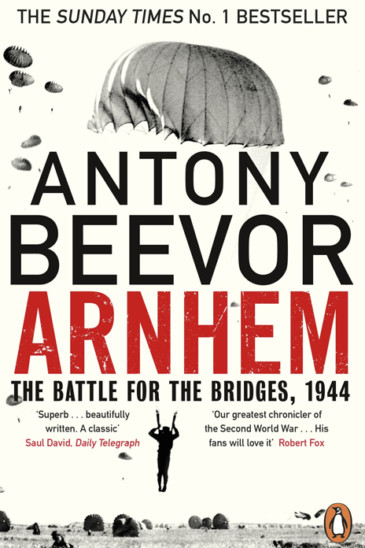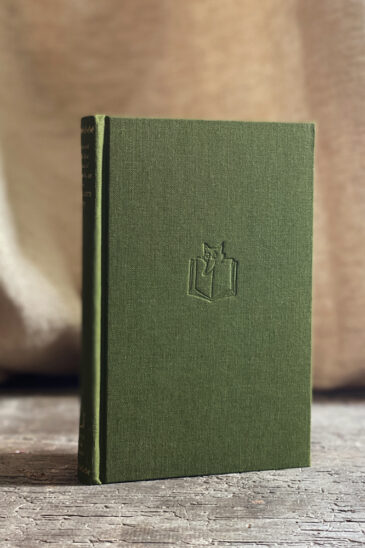Antony Beevor, Arnhem: The Battle for the Bridges 1944
Antony Beevor, using many overlooked and new sources from Dutch, British, American, Polish and German archives, has reconstructed the terrible reality of this epic clash. Yet this account is about much more than a single dramatic battle; it looks into the very heart of war.
The British fascination for heroic failure has clouded the story of Arnhem in myths, not least that victory was possible when in fact the plan imposed by Montgomery and General ‘Boy’ Browning was doomed from the start.
On 17 September 1944, General Kurt Student, the founder of Nazi Germany’s parachute forces, heard the growing roar of aeroplane engines. He went out on to his balcony above the flat landscape of southern Holland to watch the air armada of Dakotas and gliders carrying the British 1st Airborne and the American 101st and 82nd Airborne divisions. He gazed up in envy at this massive demonstration of paratroop power.
Operation Market Garden, the plan to end the war by capturing the bridges leading to the Lower Rhine and beyond, was a bold concept: the Americans thought it unusually bold for Field Marshal Montgomery. The cost of failure was horrendous, above all for the Dutch, who risked everything to help. German reprisals were pitiless and cruel, and lasted until the end of the war.
John Hackett, I Was a Stranger
In September 1944 John Hackett, commander of the 4th Parachute Brigade, was severely wounded and taken prisoner during the Battle of Arnhem. I Was a Stranger is his moving account of what happened to him afterwards. It is less a war memoir than a story of friendship – a celebration of the quiet heroism of three Dutch women.
Taken to a hospital in enemy hands and given emergency surgery, John, who was 33, was desperate to escape. Fortunately the Germans dropped their guard, and the Dutch Resistance spirited him away and hid him in a house a stone’s throw from the German Military Police post in the town of Ede.
Number 5 Torenstraat was the home of three middle-aged unmarried sisters – Ann, Cor and Mien de Nooij. There John Hackett spent the following months under the noses of the Germans, while the de Nooij family nursed him back to health. Finally, after a hair-raising journey through the waterways of occupied Holland, he made it back to the British lines. It’s a cliffhanging story, yet I Was a Stranger has something of the stillness and reflective quality of a Dutch painting. This was a household that survived by paying attention to the smallest details of daily life, and John gradually became part of it, sitting with the sisters during the long evenings, sharing their religious faith and love of English literature. But always there was the knowledge that his presence could be their death sentence, and the need for him to recover his strength became ever more pressing.
The book’s title is taken from St Matthew’s Gospel: ‘I was a stranger and ye took me in’. It is a tribute by a very unusual soldier to a group of outstandingly brave, unassuming and resourceful people, which stays in the heart long after the book is closed.
Wall Street Journal’s Five Best: Lynne Olson on Britain’s European Allies
We’re absolutely delighted to see that John Hackett’s memoir I Was a Stranger has been selected by author Lynne Olson for her The Wall Street Journal ‘Five Best’ books feature on Britain's...
Read moreThe Strength of the Gentle
Among Britain’s defeats in the Second World War, the Battle of Arnhem comes second only to Dunkirk in the popular imagination. The parachute troops’ hopeless bid for control of the Rhine crossing...
Read more














